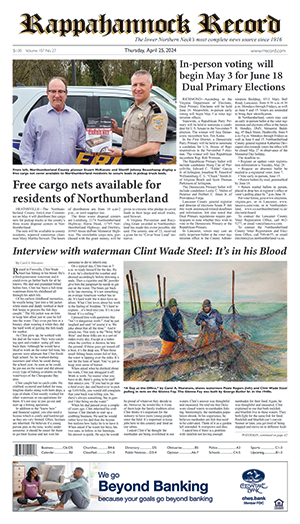Locally, Lancaster County experienced the greatest change in population since the start of the decade, according to the U.S. Census Bureau.
The recent report listed Lancaster’s 2016 population as 10,972, some 422 fewer than in 2010, for a decrease of 3.7%. Since 2010, there have been 520 births and 1,256 deaths, or a natural change decline of 736 people.
For Lancaster, international migration numbered 62 and domestic migration 199, for a net migration of 261. International migration is recognized as movement from one country to another. Domestic migration is recognized as movement from one U.S. county to another.
The recent report indicates Northumberland County’s 2016 population was 12,222, some 105 fewer than 2010, for a decrease of 0.9%. Since 2010, there have been 589 births and 1,062 deaths, or a natural change decline of 473 people.
For Northumberland, international migration numbered 189 and domestic migration, 202, for a net migration of 391.
The recent report indicates Middlesex County’s 2016 population numbered 10,778, some 181 fewer than 2010, for a decrease of 1.7%. Since 2010, there have been 549 births and 909 deaths, or a natural change decline of 360 people.
For Middlesex, international migration numbered 11 and domestic migration 167, for a net migration of 178.
Virginia sees slower population growth
by Haley Winn
Capital News Service
RICHMOND—Virginia’s population is increasing only half as fast as it was at the start of the decade, according to the U.S. Census Bureau.
From 2010 to 2011, the Commonwealth’s population grew by more than 1%. But data released March 23 showed the state’s population increased only about 0.5% between mid-2015 and mid-2016.
Nationwide, the U.S. population rose by 0.7% last year. Among the 50 states, Virginia ranked in the middle in its one-year growth rate, sandwiched between Alaska and Oklahoma.
Utah had the biggest increase in population last year at 2%. Nevada, Idaho, Florida and Washington were fractions of a percentage point behind.
Eight states lost population, with West Virginia losing the most, 0.5%.
Since the start of the decade, Virginia’s statewide population has grown about 5%, similar to states such as California and Hawaii. Washington, D.C., with a 13% increase, grew faster than any state during those six years. Then came North Dakota, just under 13% and Texas, almost 11%.
Virginia is home to some of the fastest-growing localities, as well as some with the steepest declines in population.
New Kent and Loudoun counties were among the fastest growing localities in the U.S. from 2015 to 2016. Jumping more than 700 people, New Kent’s population rose 3.5%; that ranked 36th among the nation’s 3,142 counties.
From 2015 to 2016, Loudoun County’s population grew by 3%. Although that is slower than in the past, Loudoun has grown almost 24% since 2010. Of the 211 counties with at least 300,000 residents, Loudoun County is the third fast-growing locality this decade, behind Fort Bend and Williamson counties in Texas.
Among U.S. counties with more 300,000 residents, Prince William County was number 17 in population growth since 2010. Its population has increased more than a 13% growth since the beginning of the decade.
In 2016, for the first time, Prince William County, population 455,210, surpassed Virginia Beach, population 452,602, as Virginia’s second most populous locality. Fairfax County remains number 1 with more than 1.1 million residents. Fairfax County has grown 5.3% since 2010 but registered just a tiny increase last year.
While many Virginia localities are growing, 63 have seen their population decline this decade. Emporia, for example, has lost 10.5% of its population since 2010, including 3.5% in the past year.
About 1,700 counties across the U.S. have seen a decline in population since the start of the decade. Only 27 of them have had a bigger decrease than Emporia.
Buchanan County also has experienced a significant decline since 2010, losing 8% of its population. It was among the 100 counties where, percentage-wise, population has dropped the most this decade.
Tazewell County, also in the western part of the state, lost more than 2,900 residents, about 6.5% of its population, since 2010.
Richmond, both the city and the metro area, continued to show steady growth. The Census Bureau treats Virginia’s “independent cities” as if they were counties and included them in the data release.
The city of Richmond grew 1.6% in the past year and 9.3% since 2010. Its population stands at 223,170, the 10th most populous locality in Virginia.
The Richmond metro area, which consists of the city of Richmond, the counties of Henrico and Chesterfield, and 14 other localities, including New Kent County, now has a population of 1,281,708. It remains the 45th largest metropolitan area in the U.S.
The Richmond area’s population grew 0.9% last year and 6.1% since 2010.












